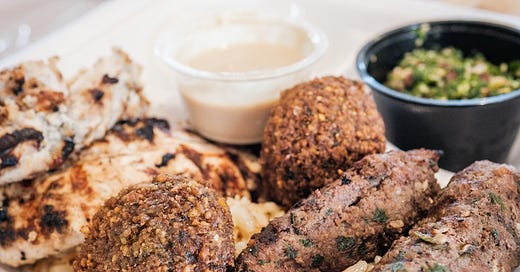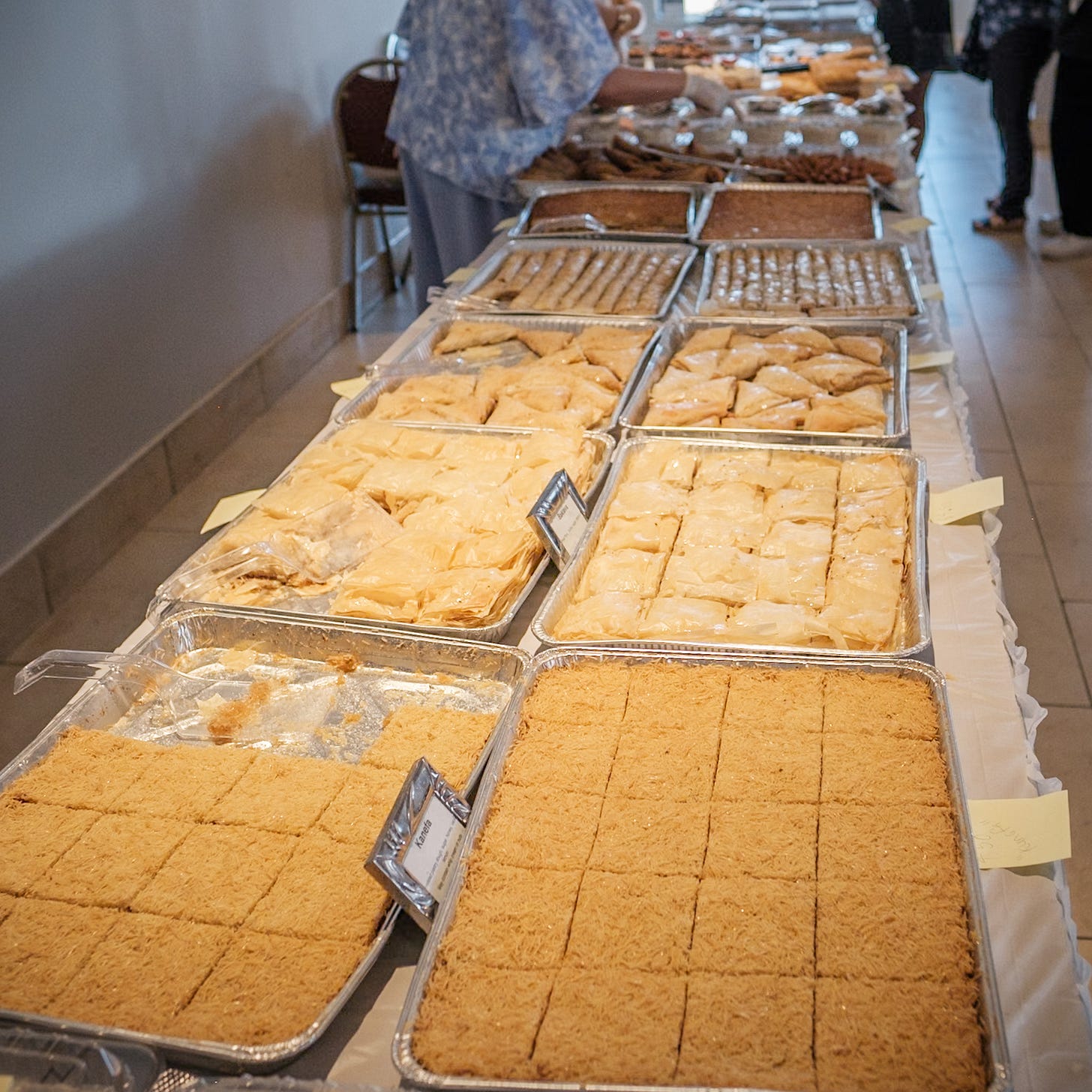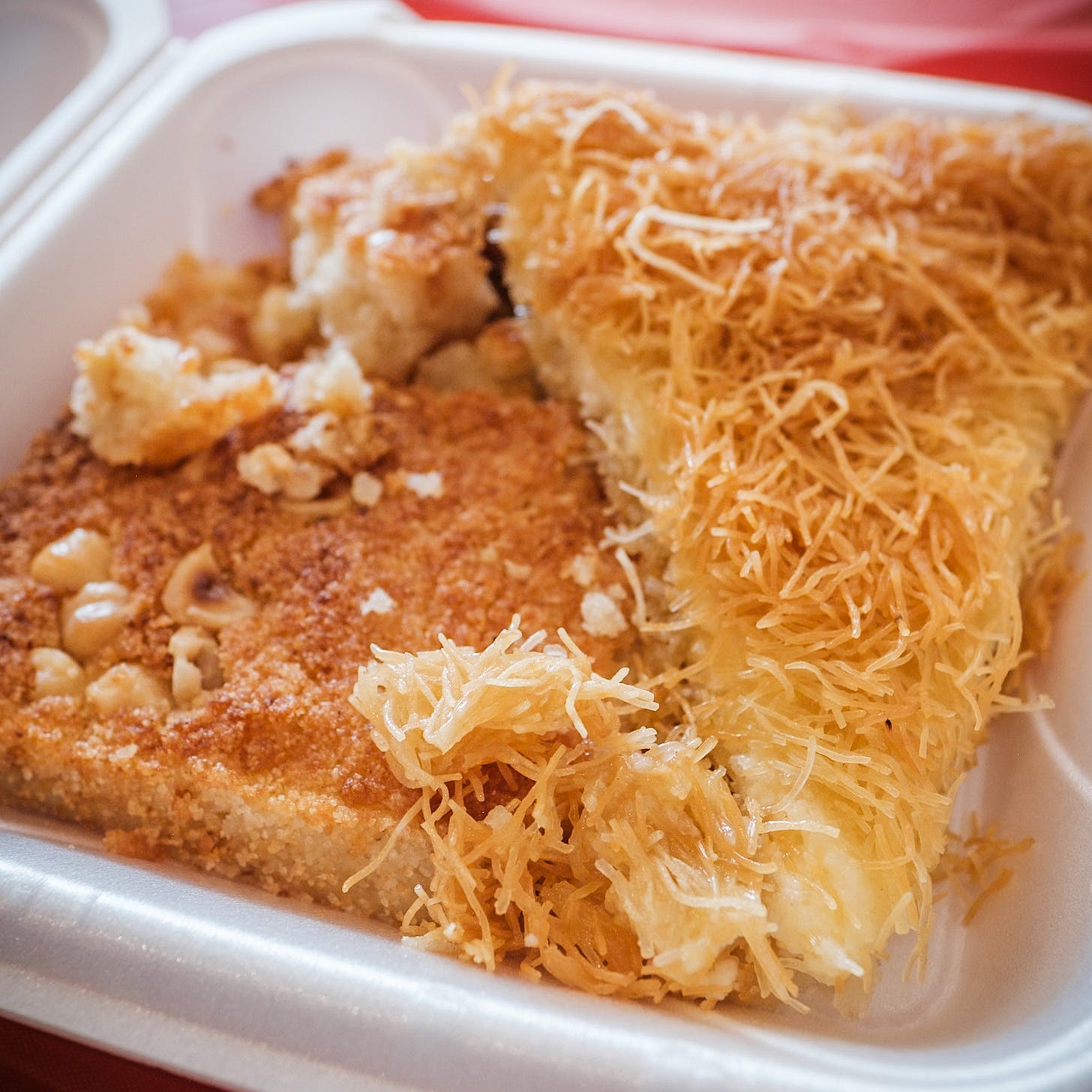Our recent experience at St. James’ Taste of Armenia made us eager to hit the church festival circuit once more before summer’s end. A mouthwatering lineup of homestyle specialties—kufta, falafel, basbousa, kunafa—drew us to Chicago’s south suburbs last weekend for the 20th Taste of Egypt Festival. The promise of camel rides was the cherry on top.

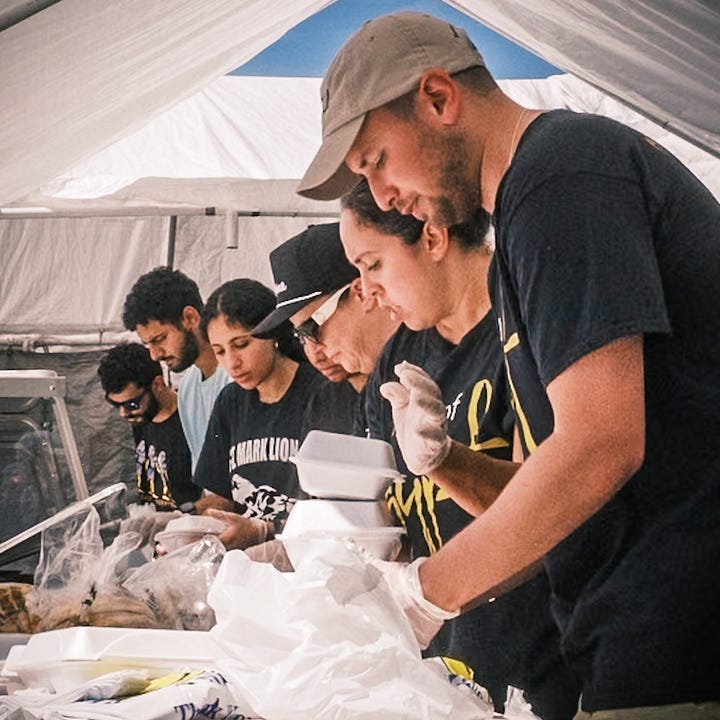
On a blazing-hot September day we followed the scent of sizzling meat around the massive perimeter of St. Mark Coptic Orthodox Church (455 79th St, Burr Ridge) to an assembly line of jovial volunteers dishing out classic Egyptian foods with a side of Dad jokes.
Having ordered one of every item on the menu, I scooped up our leaning tower of styrofoam and gingerly made my way down a flight of stairs past the grill station and into the rec hall. The subterranean space simultaneously hit me with a blast of cold air and electric energy: sugared-up children zipped between tightly-packed tables, parishioners exchanged enthusiastic greetings and soul-stirring melodies coursed through the sound system.
We took our seats and went in for the kufta—plump fingers of spiced ground beef with chopped onions and parsley—whose charred bits and meaty drippings soaked into the rice pilaf below. I enjoyed the accompanying cucumber-yogurt sauce, which was similar to Greek tzatziki, but I preferred the tabouli, whose punchy dressing and potent combo of red and spring onions made for a personality-packed parsley salad.
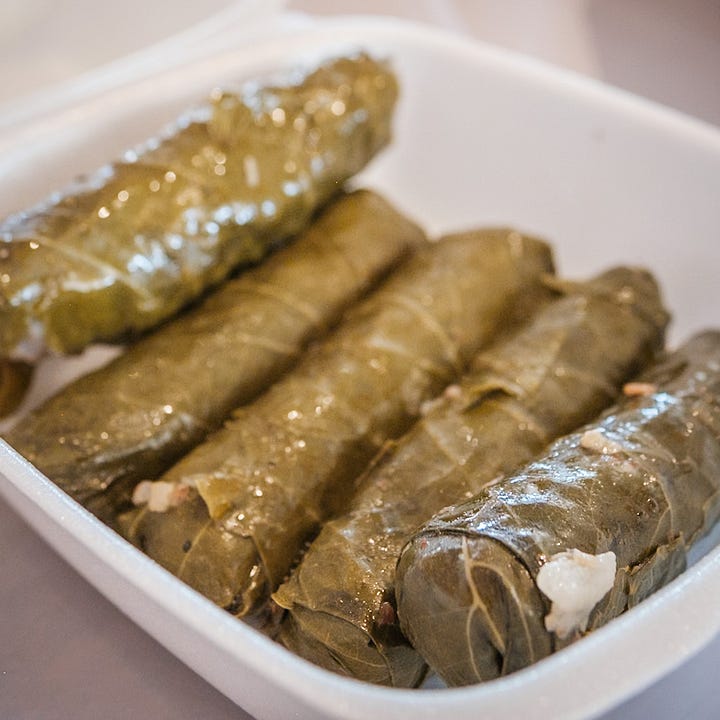
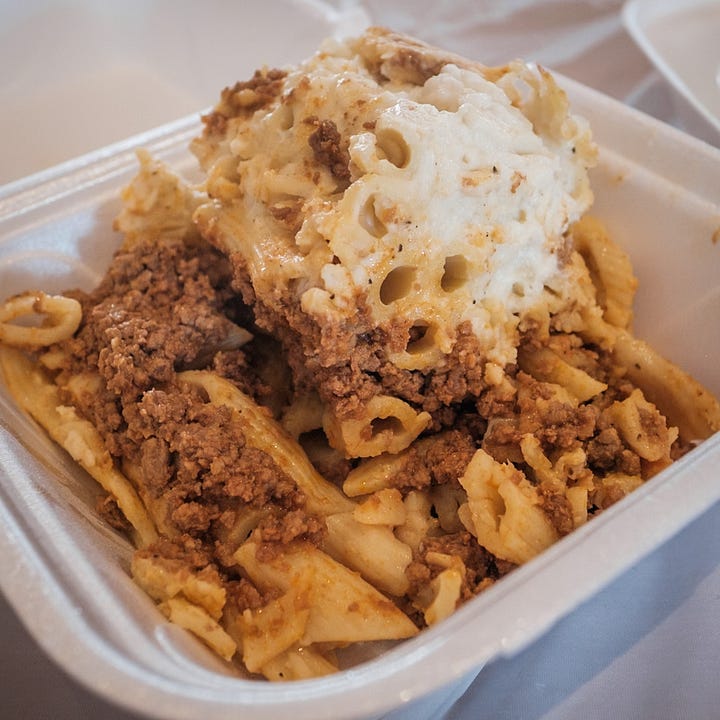
Although both the falafel and chicken kabobs on our combo plate were lovingly seasoned, I found myself reaching again and again for the grape leaves. Still warm and stuffed with aromatic rice, seasoned ground beef and herbs, these lemon-infused packets were tender and bright.
The macaroni béchamel was pure comfort. Introduced by Greek and Italian immigrants in the 19th century, this hearty pasta casserole has become a de rigeur dish at Egyptian family gatherings. In this particular version, the ratio of peppery béchamel to meat-sauced penne was comical; the jiggling crown of baked cream instantly flopped over, resulting in a delicious mess.
From across the room a sea of syrup-soaked sweets glimmered like the gold in Tutankhamen’s tomb. I knew I wanted a slice of kunafa—I settled on the one whose crispy curls of kataifi (shredded phyllo pastry) had been cooked until chestnut brown. We also opted for a hazelnut-topped cake and a fried pastry showered in pistachios.
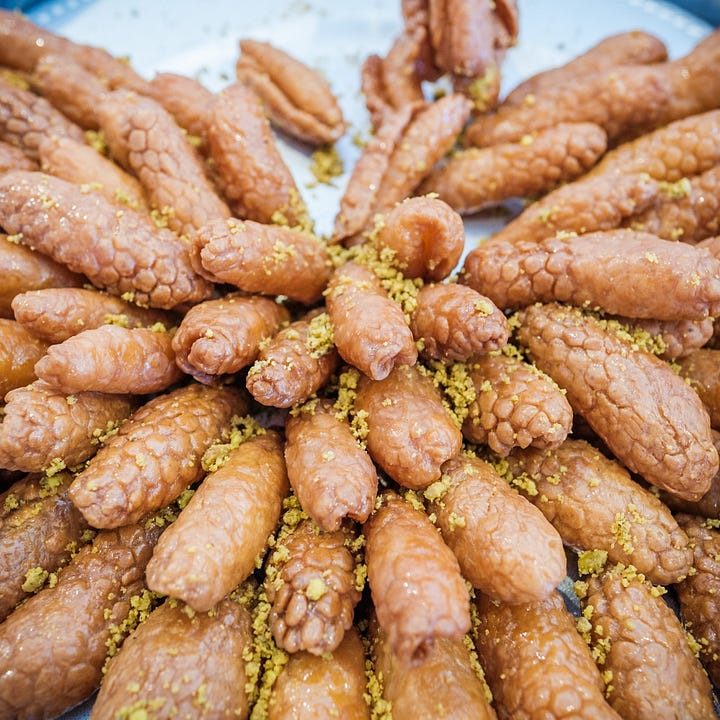
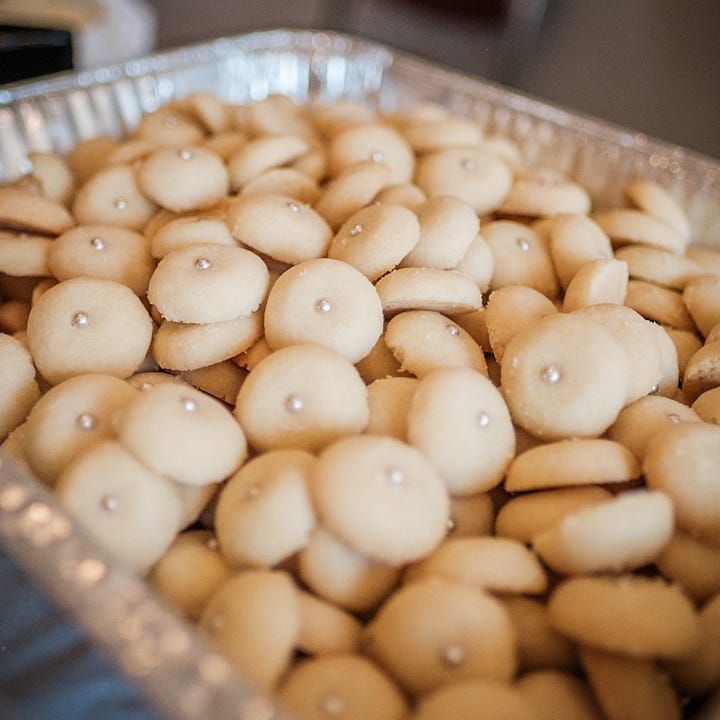
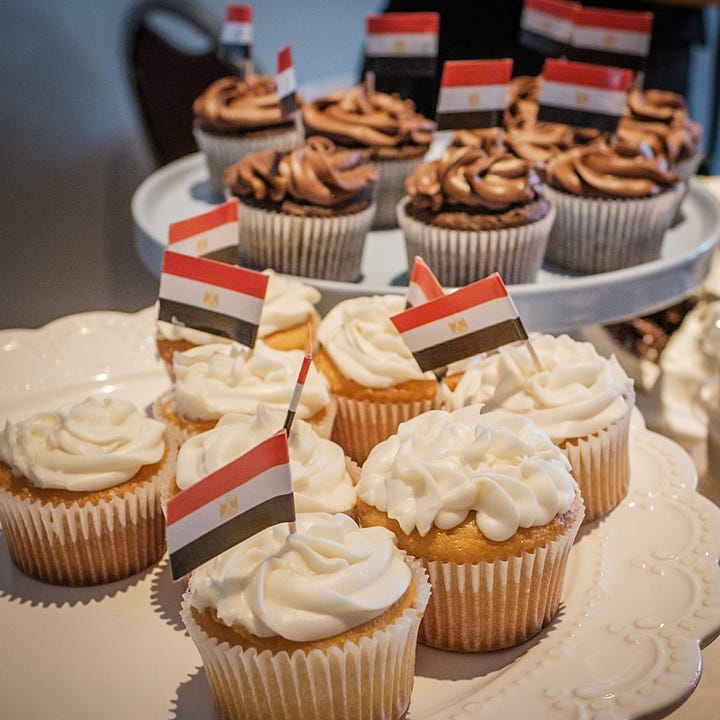
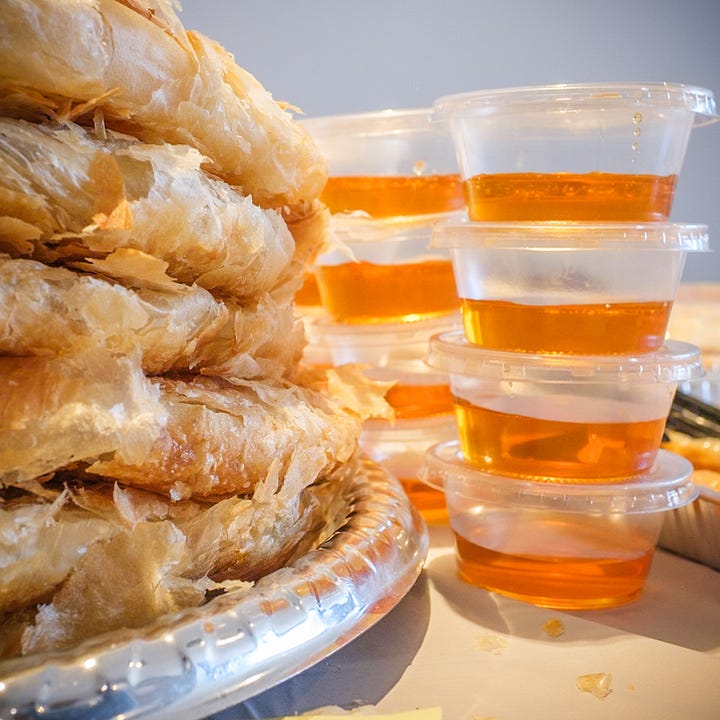
We brought our sweets to a table where a mother and her two children were seated. The daughter, who was making her way through a vanilla-frosted cupcake she covered in gummy worms, chatted us up. Without a hint of irony she shook her head and remarked, “Egyptian desserts are very sweet…too sweet.”
Her mother informed us that the pattern-stamped pastry was called Zainab’s fingers. I loved how the delicate crunch of the exterior yielded to spongy, sugar-soaked semolina grains inside. Fluffy semolina was the main ingredient in the basbousa cake slice, which was delightfully chewy with slight traces of coconut.
The kunafa stole the show. Unlike versions I’ve sampled previously, which featured pulls of tangy string cheese, this one was filled with a luscious milk cream, whose silky, pudding-like texture was a perfect contrast to the crunchy pastry shards.
High on sugar, we stumbled outdoors and saw a line of participants atop a raised platform eagerly waiting to ride a juvenile dromedary named Norman. A tattooed handler led the young steed around a rectangular pen as an awkwardly-perched father and son gripped the saddle. Once Norman moved in front of a photographic backdrop depicting the temples at Giza, smiling onlookers snapped pictures of this uncanny attraction.
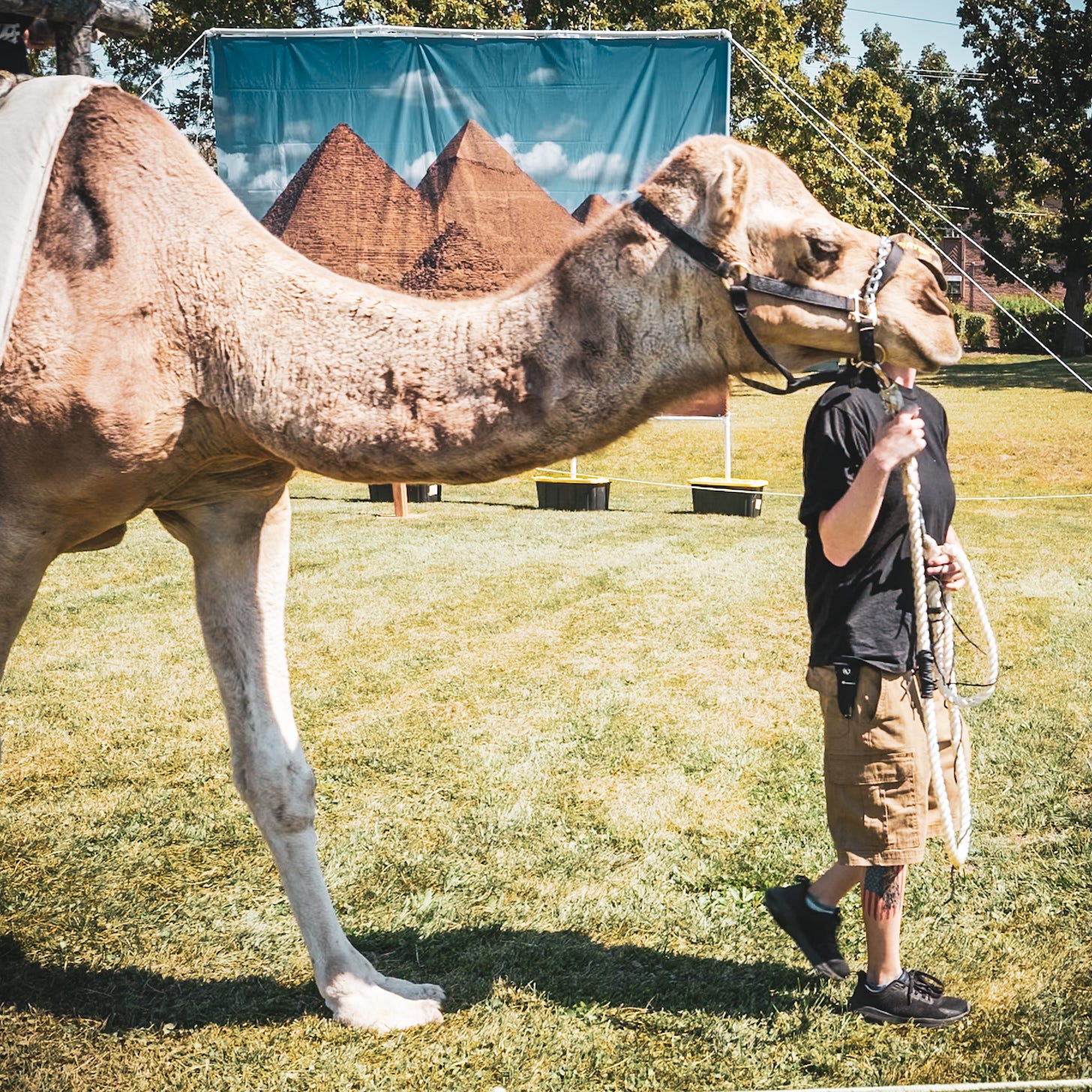
I engaged a lovely woman working the camel ride counter, named Sarat, who admitted that after observing the wicked behavior of camels-for-hire outside Cairo, she didn’t trust them one bit. She said she preferred to drive a dune buggy into the desert, where she, not the camel, controlled her destiny.
It turned out she had assisted her aunt in making the delicious cream custard kunafa we sampled—20 trays in total, all made the day before—and swooned when I remarked how much I enjoyed the macaroni béchamel. “We eat that at least twice a week in our home.”
I was curious about the nearby tent selling fresh roasted corn and sweet potatoes and Sarat explained that those two items are typical street foods in Cairo. She explained, “Every ten feet there’s someone selling street food. That’s what we do. We’re Egyptians. We eat.”
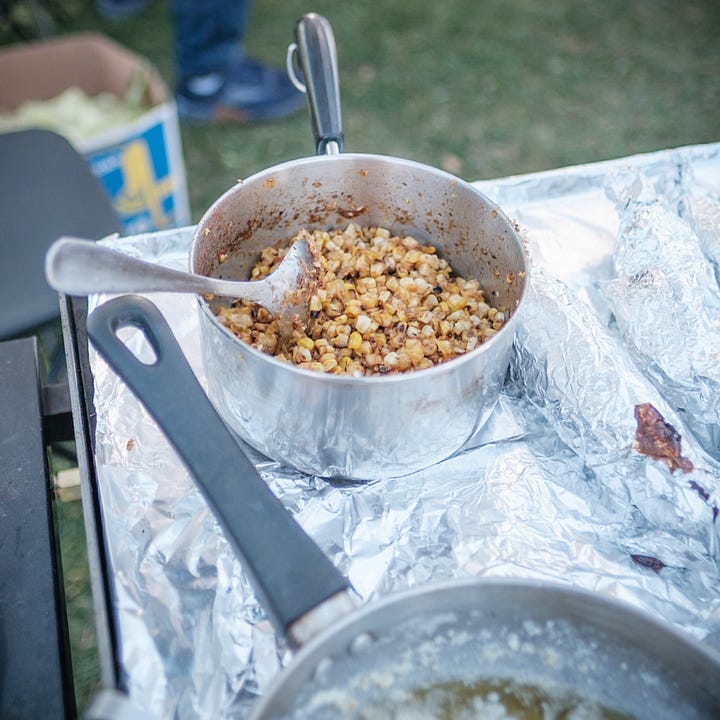
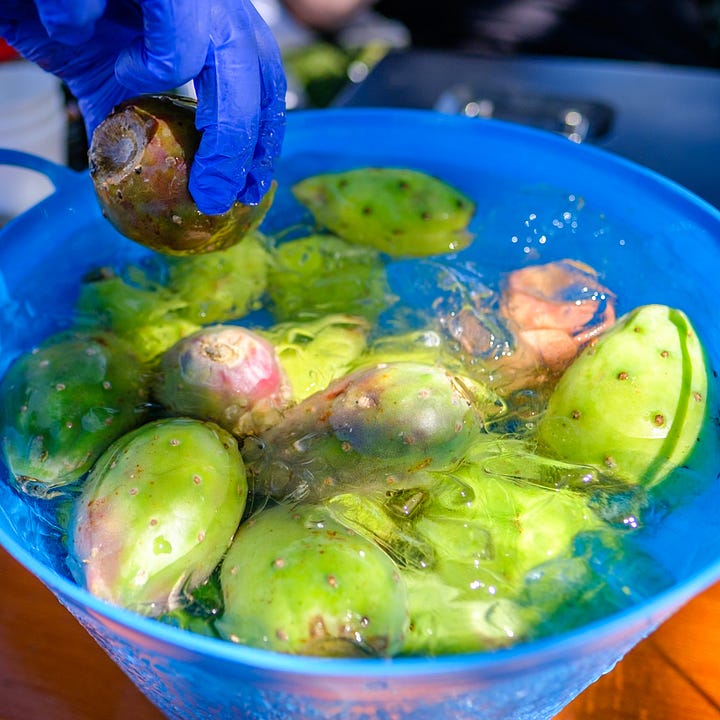
We swung by the stall, and the man grilling the corn noticed we were admiring a bowlful of prickly pear fruit sitting in an ice water bath. When I remarked that I had tried the fruit in Mexico and he assured me “the Egyptian one is way tastier” and encouraged us to sample the jewel-toned fruit.

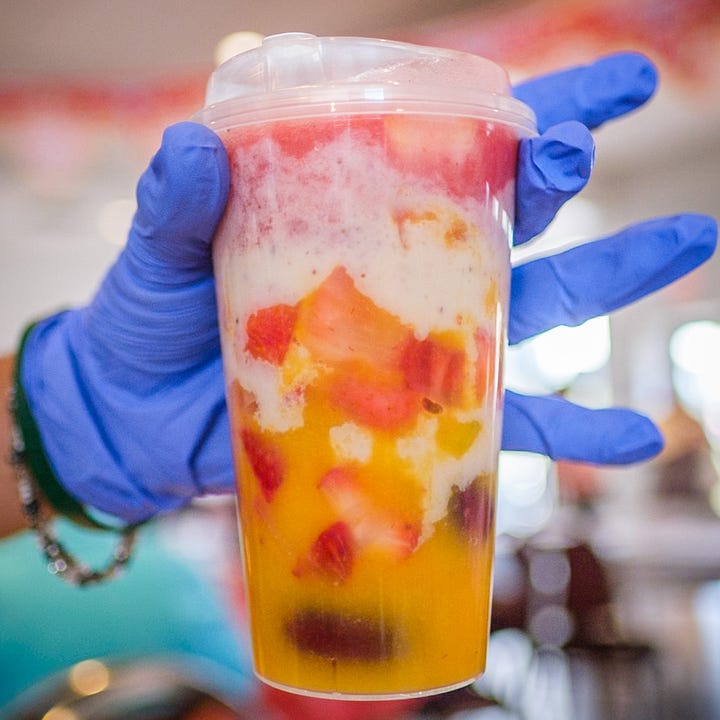
Across the way another stand sold drinks featuring ingredients that wouldn’t be out of place in Mexico: hibiscus, coconut water, mango pulp and guava juice. I was intrigued by the fruit cocktail concoction called fakhfakhina. Had we not already stuffed ourselves silly, it would have been the perfect refreshment for this sweltering heat.
With dishes this satisfying, prepared by friendly parishioners, I can’t imagine not overeating at a church festival. I’m already looking forward to next summer and the wonderful foods and people we will encounter.
Photos by Jared Wheeler
If you enjoyed this post, please forward it to someone who’d enjoy it, and tap the heart icon above or below, which will help me reach more readers. Thanks!


